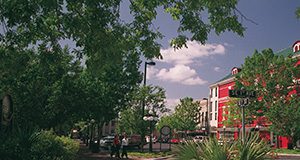This 2-page fact sheet written by Michael G. Andreu, Caroline A. Hament, David A. Fox, and Robert J. Northrop and published by the UF/IFAS School of Forest Resources and Conservation describes a 2016 ecological assessment of the urban forest in the city of Gainesville, FL. It provides a detailed look into some of the economic and ecological values of the forest to enhance understanding and improve urban forest policies, planning, and management, as well as to provide empirical data for the inclusion of trees within environmental regulations.
http://edis.ifas.ufl.edu/fr417
Tag: David A. Fox
Values and Ecosystem Services of Gainesville’s Urban Forest in 2016
The urban forest is a crucial factor in the well-being of a community because of the aesthetics, health benefits, and cost-savings that it provides. The urban forest is our habitat, and we must manage it in ways that will provide the benefits we need and desire. This 3-page fact sheet written by Michael G. Andreu, Caroline A. Hament, David A. Fox, and Robert J. Northrop and published by the UF/IFAS School of Forest Resources and Conservation describes an urban forest ecological analysis conducted in 2016 in Gainesville, Florida, by the University of Florida in partnership with the Parks, Recreation, and Cultural Affairs Department to quantify the vegetation structure, functions, and values of the urban forest.
http://edis.ifas.ufl.edu/fr414
The Structure and Composition of Gainesville’s Urban Forest in 2016
Trees in cities were formerly thought of merely as a collection of individuals found along streets and incorporated into landscaping. However, urban trees are now viewed as being part of a unique forest type, and understanding the urban forest’s structure and composition is an important first step towards managing it. This 4-page fact sheet written by Michael G. Andreu, Caroline A. Hament, David A. Fox, and Robert J. Northrop and published by the UF/IFAS School of Forest Resources and Conservation aims to provide a broader understanding of the urban forest in the city of Gainesville, Florida.
http://edis.ifas.ufl.edu/fr413
Sorting out the Florida Sabal Palms (FOR289/FR357)
 While traveling through the Florida peninsula, a casual observer will notice a wide variety of palms and find that many are called “palmetto.” This 4-page fact sheet helps field investigators identify the four Sabal species found in Florida's natural areas, first by distinguishing them from other fan palms and then from each other. Written by David A. Fox and Michael G. Andreu, and published by the UF Department of School of Forest Resources and Conservation, March 2012.
While traveling through the Florida peninsula, a casual observer will notice a wide variety of palms and find that many are called “palmetto.” This 4-page fact sheet helps field investigators identify the four Sabal species found in Florida's natural areas, first by distinguishing them from other fan palms and then from each other. Written by David A. Fox and Michael G. Andreu, and published by the UF Department of School of Forest Resources and Conservation, March 2012.
http://edis.ifas.ufl.edu/fr357
